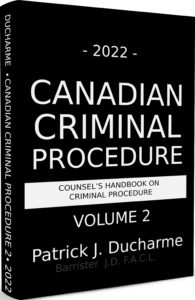 |
| Patrick Ducharme |
Continued from Part 1.
With regard to the doctrine of willful blindness, the court found that it should be considered distinct from recklessness. The doctrine requires that the court delve into the accused’s state of mind in an effort to establish knowledge. Willful blindness, the court said, could substitute for actual knowledge whenever knowledge is a component required to prove the crime.
The court concluded that willful blindness imputes knowledge to an accused whose suspicion is aroused to a point where he needs to make further inquiries, but instead, deliberately chooses not to make those inquiries. In the Briscoe case, for example, the aider provided statements to the police that demonstrated he deliberately chose not to inquire about plans of others to kidnap and sexually assault, despite the fact that his suspicions were aroused, “because he did not want to know.”
Whether the evidence is direct evidence or circumstantial evidence, the trier of fact is entitled to believe or rely on either as much or as little as the other in deciding the case. Direct evidence is simply evidence from witnesses who tell what they personally saw or heard. Circumstantial evidence is evidence from witnesses who described events from which the trier of fact is asked to draw inferences. For example, a witness might say that he or she has seen someone enter the courthouse lobby wearing a raincoat and carrying an umbrella, both wet. If the trier of fact believes that witness, the trier might conclude that it is raining, although this conclusion is inferred. Both kinds of evidence count. The law treats both equally. Neither is necessarily better or worse than the other.
Filed exhibits during at trial may provide direct or circumstantial evidence. Some statutory provisions proclaim that the contents of certain documents presumptively amount to the truth of their contents unless other evidence establishes otherwise. Subsection 29(3) of the Canada Evidence Act, for example, provides, “Where a cheque has been drawn on any financial institution or branch thereof by any person, an affidavit of the manager or accountant of the financial institution or branch, sworn before any commissioner or other person authorized to take affidavits, setting out that he is the manager or accountant, that he has made a careful examination and search of the books and records for the purpose of ascertaining whether that person has an account with the financial institution or branch and that he has been unable to find such an account, shall be admitted in evidence as proof, in the absence of evidence to the contrary, that that person has no account in the financial institution or branch.

The above is the an excerpt of Patrick J Ducharme's book, Canadian Criminal Procedure Volume 2, available at Amazon or in bulk through MedicaLegal Publishing along with Criminal Trial Strategies.
Subscribe to Patrick Ducharme's Youtube Channel
